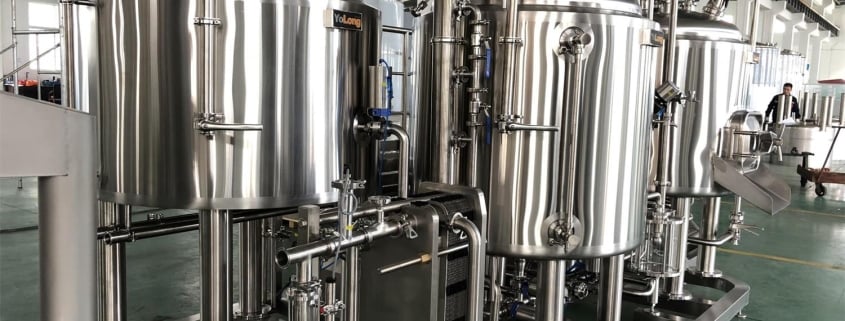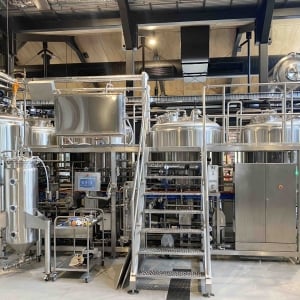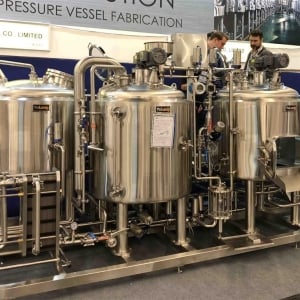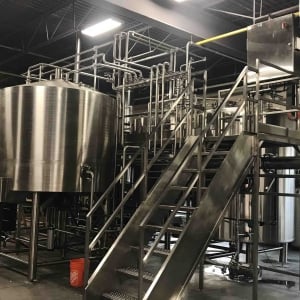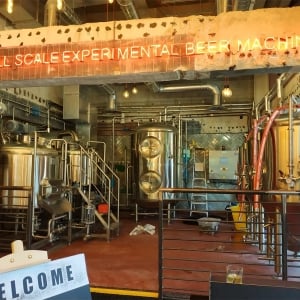3 BBL COMBO Fermenter Brewing Systems
A 3 barrel (BBL) fermenter is a common size for small to mid-sized craft breweries producing specialty beers on a micro scale. This article provides a comprehensive guide to 3 BBL combo fermenter systems, including design, specs, suppliers, installation, operation and maintenance.
Types of 3 BBL COMBO Fermenter
| Fermenter Type | Details |
|---|---|
| Conical | Cone-shaped bottom efficiently collects yeast and trub |
| Uni-tank | Combined fermentation and aging in one tank |
| Split-top | Top opens into two parts for easy cleaning |
| Jacketed | Heating/cooling outer jacket controls temp |
| Stackable | Vertically stack multiple units to save floor space |
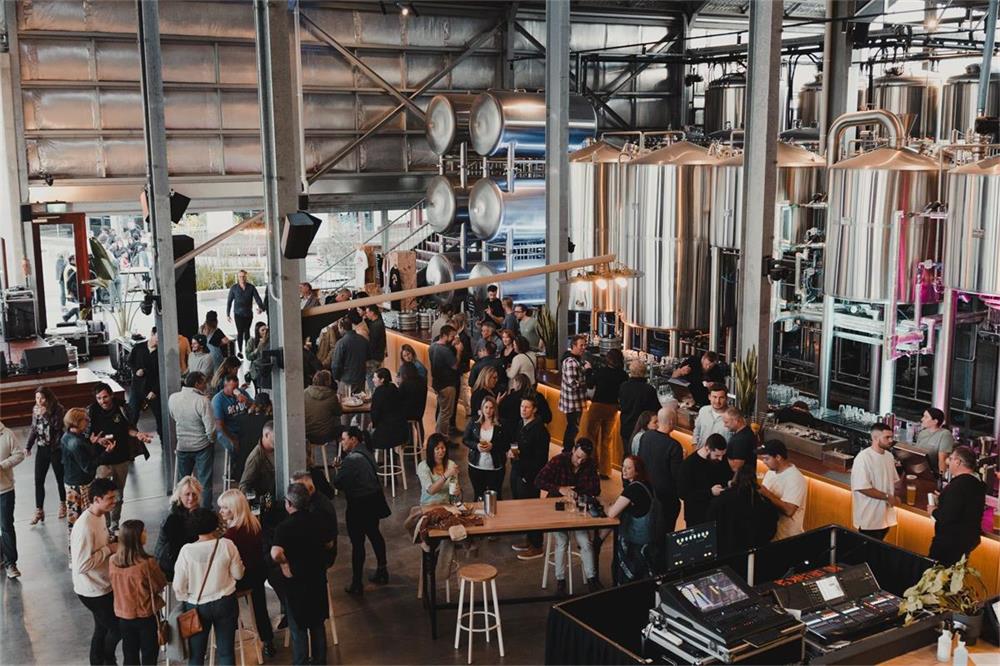
3 BBL COMBO Fermenter Brewing Process
The typical fermentation process in a 3 BBL fermenter system is:
- Wort is transferred from the brewkettle into the fermenter tank. Yeast is pitched to start fermentation.
- Active fermentation occurs over 4-7 days. Yeast converts sugars into CO2 and alcohol. internal cooling systems maintain optimum temperature.
- Beer cleans as yeast and solids settle out. Diacetyl rest performed if needed.
- After sufficient aging & clarification, beer is carbonated and packaged. Yeast may be harvested and repitched.
- CIP (clean-in-place) procedures performed regularly to sanitize all internals.
Accurate temperature control is critical during fermentation to produce clean, consistent beer. 3 BBL fermenters are designed for complete automation and remote system control.
3 BBL COMBO Fermenter Specifications
| Parameter | Details |
|---|---|
| Total Capacity | 90-100 gallons liquid volume |
| Batch Size | Up to 3 barrels (BBLs) of wort |
| Footprint | 4 ft x 4 ft floor space typical |
| Height | Up to 12 ft tall for conical unitary |
| Weight | 1700-2500 lbs when empty |
| Construction | Stainless steel interior and exterior |
Many customization options exist including jacketed vs unitary, number of ports & connections, sight glasses, standalone vs integrated systems, and split-top options. Dimensions, weight and price vary accordingly.
3 BBL COMBO Fermenter Suppliers
| Supplier | Price Range |
|---|---|
| JV Northwest | $16,000 – $26,000 |
| SS Brewtech | $15,500 – $23,000 |
| Spike Brewing | $14,000 – $21,000 |
| Ss Brewtech | $13,500 – $19,500 |
| Blichmann Engineering | $12,000 – $18,000 |
Price ranges indicate tank only. Fully automated systems with temperature control, cleaning systems, valves & hardware can add $8000-$16000. Custom options also impact price significantly.
3 BBL COMBO Fermenter Installation
| Task | Procedure |
|---|---|
| Location | Level, vibration-free pad near brew house |
| Layout | Glycol lines, drains, electric |
| Lifting | Use rigging equipment rated for weight |
| Mounting | Anchor to floor for hurricane |
| Connections | Glycol, gas, plumbing lines |
| Insulation | Wrap glycol lines and drains |
Proper planning for layout, spacing, drainage and flexibility helps avoid issues. Hire contractors for specialized tasks like mounting, insulation, electricals etc if needed.
3 BBL Fermentation System Operation
| Phase | Process |
|---|---|
| Pre-brew | Interior spray ball CIP |
| Filling | Bottom dump through 2″ tri-clamp |
| Yeast pitch | Through 1.5″ side port |
| Fermentation | Temperature automation & remote monitoring |
| End ferment | Diacetyl rest if required |
| Yeast harvest | Use bottom dump valve |
| Maturation | Adjust temp, variable contact time |
| Pre-transfer | CIP spray ball cleaning |
| Emptying | CO2 pressure transfer through racking arm |
Automated sequencing provides push-button simplicity after initial programming. Robust process control is easy with precise monitoring of each batch. Detailed logs aid reproducibility.
3 BBL COMBO Fermenter Maintenance
| Frequency | Task |
|---|---|
| Each batch | Clean and sanitize all surfaces |
| Monthly | De-stone weak acid rinse |
| Quarterly | Break down valves for inspection |
| Yearly | Replace gaskets & seals |
| As needed | Tune/calibrate sensors & probes |
Regular inspection inside tank ensures probe function and cleanliness. Valve rebuilds prevent product loss from leaks. Yearly replacement of wear items keeps system running smoothly long-term.
How to Choose a 3 BBL Fermentation Supplier
| Factor | Evaluation Criteria |
|---|---|
| Quality | Welds, surface finish, hardware |
| Design | Uni vs conical, jacketed etc |
| Customization | Dimensions, ports, accessories |
| Automation | Sensors, controls, programming |
| Support | Warranty, manuals, parts availability |
| Company | Years in business, reputation |
| Cost | Tank price, total installed system |
Get quotes from multiple vendors to compare quality, configurability and pricing. Prioritize ease of operation and support during selection. Total cost is higher than just the fermenter tank.
3 BBL COMBO Fermenter Pros and Cons
| Pros | Cons |
|---|---|
| Optimal size for specialty microbrewing | Higher capital cost than larger systems |
| Flexible batch sizes up to 3 bbl | More manual labor than fully automated brewhouse |
| Efficient testing of recipes | Complex planning for layout, flooring, drainage etc |
| Simplified licensing and regulations | Specialized contractors needed for install |
| Complete temperature and process control | Reselling difficult if upgrading later |
The 3 bbl scale balances capability and cost for artisan brewers. Limitations require careful projection of production needs and growth.
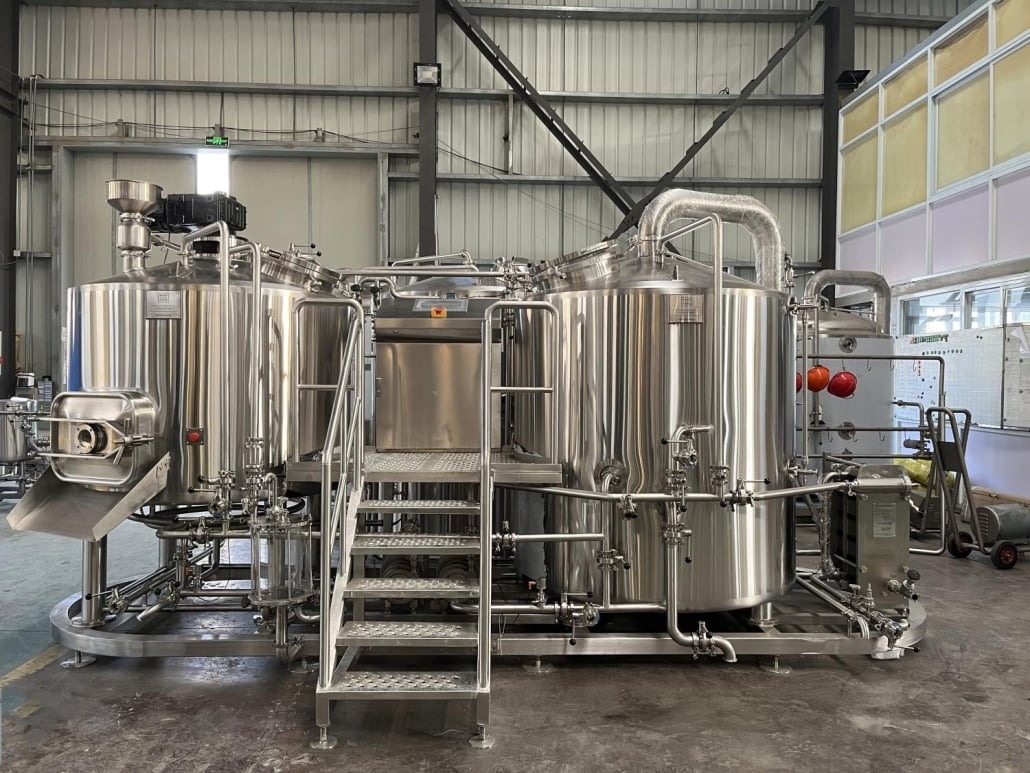
FAQ
What is the best fermenter material: stainless steel or plastic?
Stainless steel is superior for commercial production – more durable, cleaner, and professional appearance. High-grade stainless resists corrosion from cleaning chemicals unlike plastic.
Should I choose a conical or uni-tank fermenter design?
Conicals efficiently consolidate but need a separate aging tank. Uni-tanks simplify the system and use space efficiently, but cannot harvest large yeast quantities. Choose based on beers produced and workflow.
What additional equipment is required beyond the fermenter?
Essential peripherals include: glycol chiller, temperature sensors, automatic valve system, air compressor, cleaning tanks & pump, computer control panel. Can add yeast brink, carbonation/filtration, grain handling etc.
What are typical problems with 3 BBL fermenter systems?
Insufficient cleaning leading to infections, clogged dip tubes or dump valves, sticky valves, glycol leaks, sensor failures or calibration drift, and temperature control issues are common. Other problems arise from improper install or layout.
How many units can I stack together?
Usually 2-3 units maximum for stability and ergonomics. Use adjustable feet to keep units perfectly plumb if stacking multiple high. Ensure the floor can support total weight stacked.
What design choices affect ease of maintenance?
Conicals with bottom dump valves avoid climbing inside tank but limit access. Side-manways improve entry but need door lifts for ergonomics. Well-planned layout and space around tanks aids maintenance tremendously.
Conclusion
Optimizing design and operation of 3 BBL fermenters allows craft brewers to efficiently expand production while retaining control over specialty recipe development. Careful project planning and selection of turnkey automation systems reduces labor while delivering consistent quality and reproducibility. With some upfront investments into layout, drainage and accessories, 3 BBL configurations provide an ideal foundation for microbrewery growth for many years.

